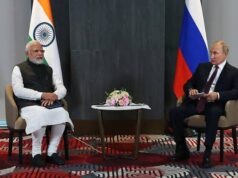Cash-strapped states threaten India’s double-digit growth goal

Synopsis
The nation’s 28 states, which account for about 60% of total government expenditure on infrastructure and asset creation, are hamstrung by declining tax revenue and the cost of fighting the Covid-19 pandemic.
Prime Minister Narendra Modi’s plan to boost capital expenditure to help India regain the fastest-growing major economy title risks being derailed by the nation’s cash-strapped states, which are cutting back on such spending.
The nation’s 28 states, which account for about 60% of total government expenditure on infrastructure and asset creation, are hamstrung by declining tax revenue and the cost of fighting the Covid-19 pandemic. Also, unlike the federal government, provinces don’t have the flexibility to borrow more to maintain spending as that would lead to a fiscal deficit blowout.
“While central expenditure growth has picked up significantly over the last three months, states continue to compress expenditure to maintain fiscal balance,” said Samiran Chakraborty, an economist at Citigroup Inc. “This may dampen the overall growth.”
Modi’s government this month proposed boosting capital expenditure by 26% to 5.54 trillion rupees ($76 billion) next fiscal year starting April, hoping the multiplier effect of such spending will result in a world-beating double-digit expansion for the economy that’s headed for its biggest contraction this year.
The Reserve Bank of India estimates that every one rupee spent by the federal government will lead to an increase in gross domestic product by 3.14 rupees, while similar spending by states will boost output by 2 rupees. But states aren’t spending enough, according to an analysis.
Capital expenditure of 17 key states contracted 23.5% in the nine months to December from a year ago, possibly leading to a shortfall of as much as 1.8 trillion rupees in the current year’s spending aim, Singhal said.
That gap can knock off 3.6 trillion rupees from economic output. Whereas, additional spending by the federal government in the current year would add just 848 billion rupees despite a higher multiplier effect.
A cut by states may “dampen” some of the impact of the federal stimulus measures and “act as a drag on revival of investment and overall growth,” the RBI said in a report in December.




